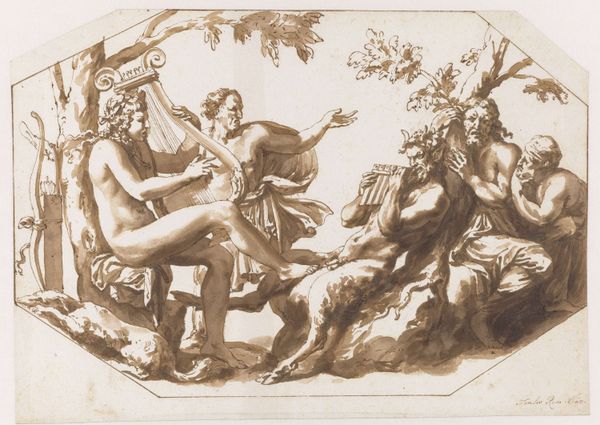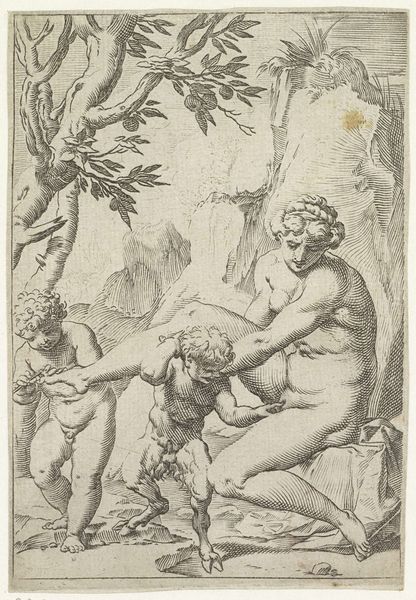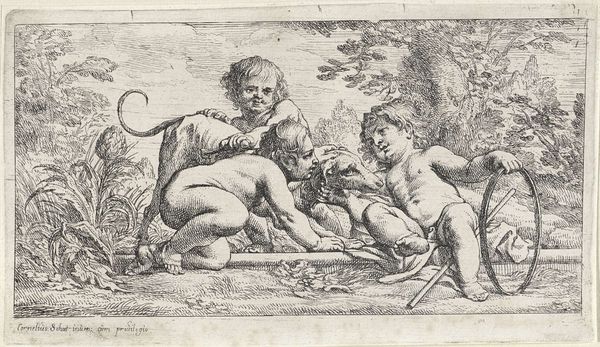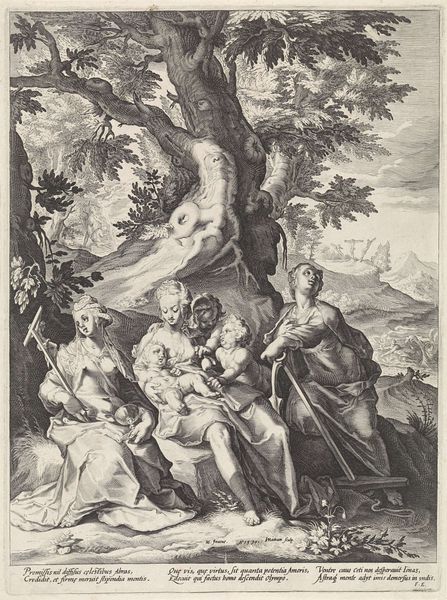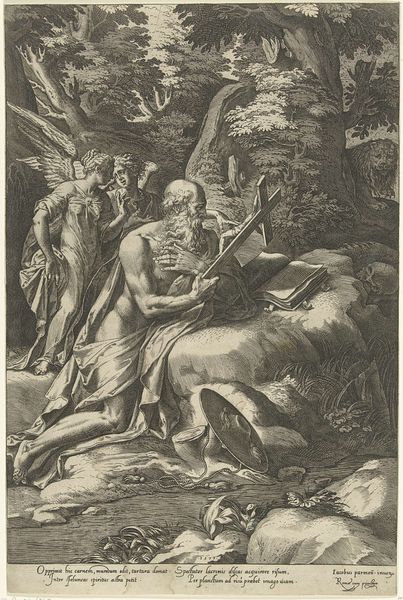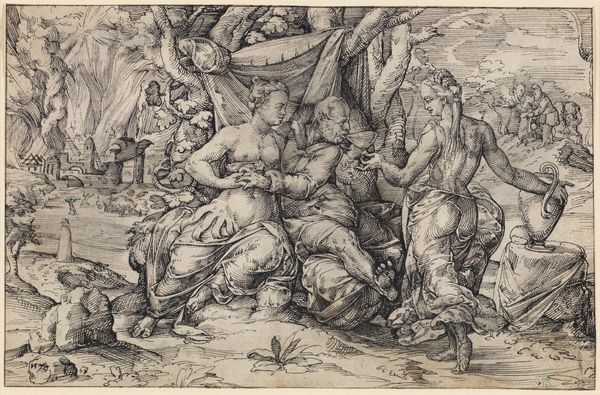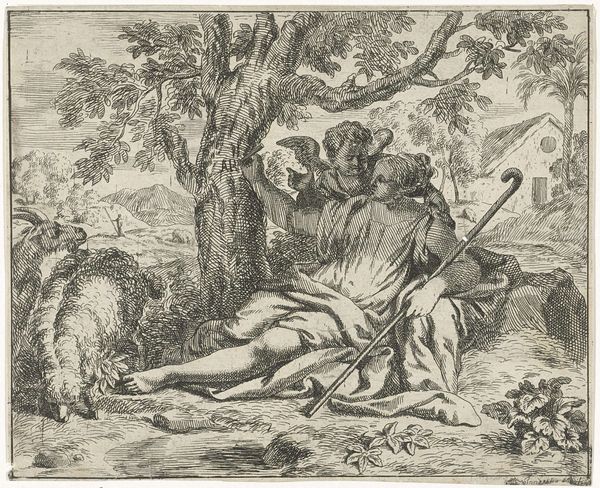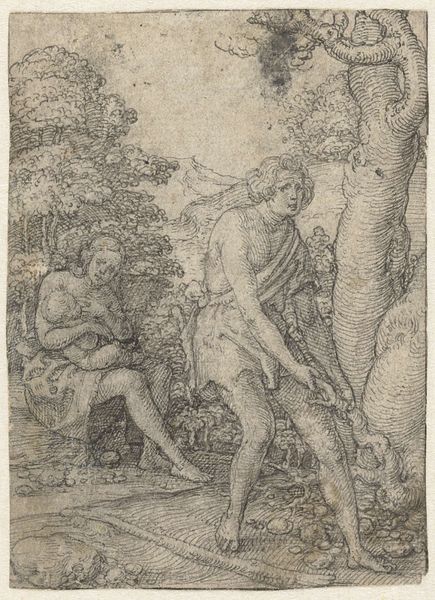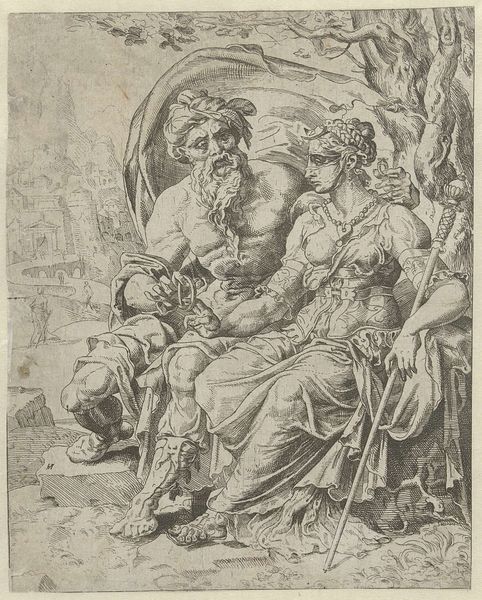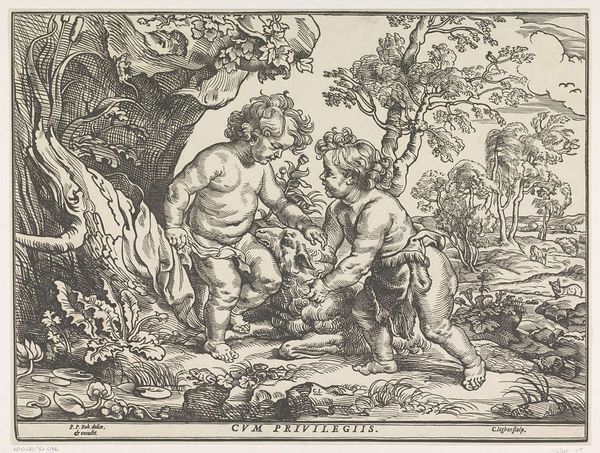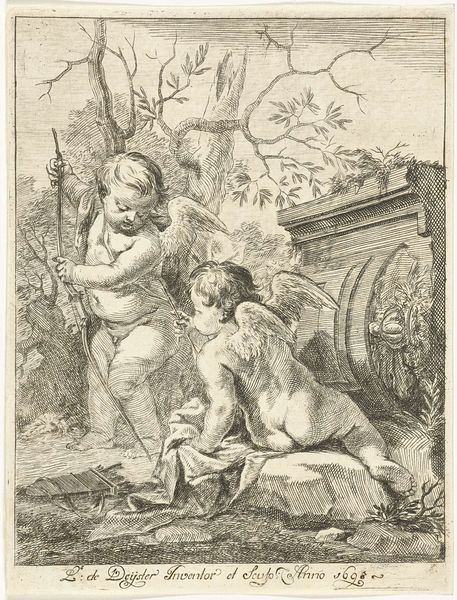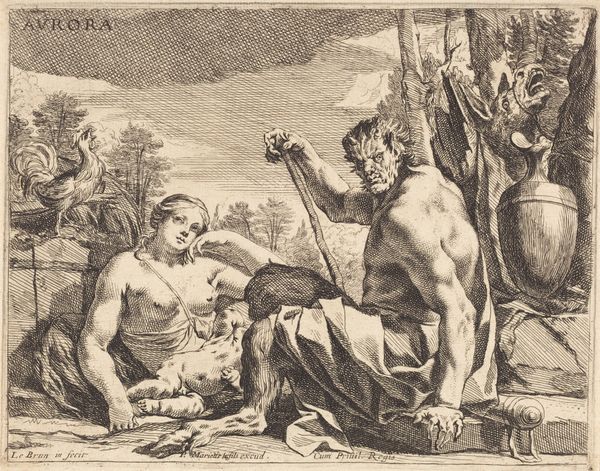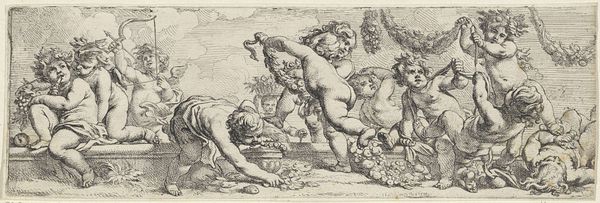
drawing, engraving
#
drawing
#
ink drawing
#
baroque
#
pen illustration
#
landscape
#
figuration
#
line
#
history-painting
#
engraving
Dimensions: height 107 mm, width 152 mm
Copyright: Rijks Museum: Open Domain
Hendrik Pola made this etching "Mercurius speelt Argus in slaap" - or Mercury Lulling Argus to Sleep - using etching techniques sometime around the late 17th to early 18th century. The composition’s stark contrasts and intricate linework evoke a sense of drama, typical of the Baroque period. The eye is immediately drawn to the two figures: Mercury, the messenger god, playing his flute, and Argus, the giant with a hundred eyes, succumbing to sleep, with the watchful cow Io nearby. Pola’s use of dense, cross-hatched lines creates a rich texture that defines the musculature of the figures and the organic forms of the surrounding landscape. The composition is structured to highlight a moment of transition; Mercury’s active pose contrasts with Argus’s languid repose. This interplay embodies a semiotic dance of power and vulnerability. The act of putting Argus to sleep destabilizes a hierarchy, introducing ambiguity where one figure's watchfulness is subverted by another's cunning. Notice the formal structure of the line, used not only to depict but to conceptually underscore the themes of deception and transformation. This print serves not only as a visual narrative but as a space where meanings are actively negotiated.
Comments
No comments
Be the first to comment and join the conversation on the ultimate creative platform.
